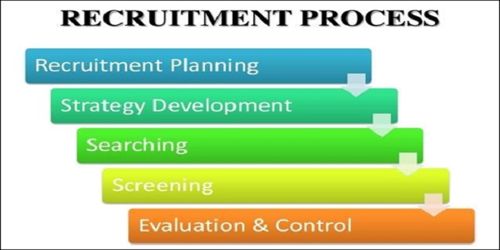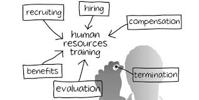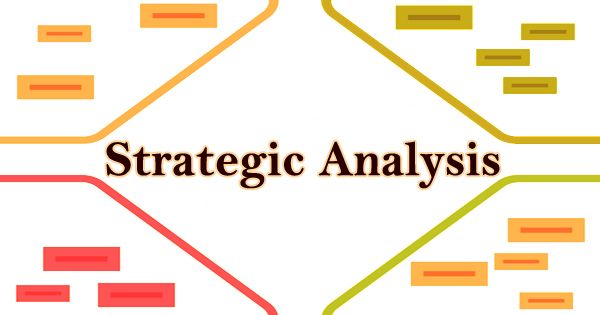Recruitment Process
Recruitment refers to the process of identifying and attracting job seekers so as to build a pool of qualified job applicants. The process comprises five interrelated stages, such as-
- Planning
- Strategy development
- Searching
- Screening
- Evaluation and control
The ideal recruitment program is the one that attracts a relatively larger number of qualified applicants who will survive the screening process and accept positions with the organization, when offered. Recruitment program can miss the ideal in many ways by failing to attract an adequate applicant pool, by under/over selling the organization or by inadequate screening applicants before they enter the selection process. Thus, to approach the ideal, individuals responsible for the recruitment process must know how many and what types of employees are needed, where and how to look for the individuals with the appropriate qualifications and interests, what inducement to use for various types of applicants groups, how to distinguish applicants who are qualified from those who have a reasonable chance of success and how to evaluate their work.

STAGE 1: Recruitment planning
The first stage in the recruitment process is planning. Planning involves the translation of likely job vacancies and information about the nature of these jobs into set of objectives or targets that specify the (1) Numbers and (2) Types of applicants to be contacted.
- Numbers of contact
Organization nearly always, plans to attract more applicants than they will hire. Some of those contacted will be uninterested, unqualified or both. Each time a recruitment Program is contemplated, one task is to estimate the number of applicants necessary to fill all vacancies with the qualified people.
- Types of contacts
It is basically concerned with the types of people to be informed about job openings. The type of people depends on the tasks and responsibilities involved and the qualifications and experience expected. These details are available through job description and job specification.
STAGE 2: Strategy development
When it is estimated that what types of recruitment and how many are required then one has concentrate in –
(1). Make or Buy employees.
(2). Technological sophistication of recruitment and selection devices.
(3). Geographical distribution of labor markets comprising job seekers.
(4). Sources of recruitment.
(5). Sequencing the activities in the recruitment process.
- ‘Make’ or ‘Buy’
Organization must decide whether to hire le skilled employees and invest on training and education programs, or they can hire skilled labor and professional. Essentially, this is the ‘make’ or ‘buy’ decision. Organizations, which hire skilled and professionals shall have to pay more for these employees.
- Technological Sophistication
The second decision in strategy development relates to the methods used in recruitment and selection. This decision is mainly influenced by the available technology. The advent of computers has made it possible for employers to scan national and international applicant qualification. Although impersonal, computers have given employers and seekers a wider scope of options in the initial screening stage.
- Where to look:
In order to reduce the costs, organizations look in to labor markets most likely to offer the required job seekers. Generally, companies look in to the national market for managerial and professional employees, regional or local markets for technical employees and local markets for the clerical and blue-collar employees.
- When to look:
An effective recruiting strategy must determine when to look-decide on the timings of events besides knowing where and how to look for job applicants.
STAGE 3: Searching
Once a recruitment plan and strategy are worked out, the search process can begin. Search involves two steps –
- Source activation and
- Selling.
- Source activation
Typically, sources and search methods are activated by the issuance of an employee requisition. This means that no actual recruiting takes place until lone managers have verified that vacancy does exist or will exist.
If the organization has planned well and done a good job of developing its sources and search methods, activation soon results in a flood of applications and/or resumes.
The application received must be screened. Those who pass have to be contacted and invited for interview. Unsuccessful applicants must be sent letter of regret.
- Selling
A second issue to be addressed in the searching process concerns communications. Here, organization walks tightrope. On one hand, they want to do whatever they can to attract desirable applicants. On the other hand, they must resist the temptation of overselling their virtues.
In selling the organization, both the message and the media deserve attention. Message refers to the employment advertisement. With regards to media, it may be stated that effectiveness of any recruiting message depends on the media. Media are several-some have low credibility, while others enjoy high credibility. Selection of medium or media needs to be done with a lot of care.
STEP 4: Screening:
Screening of applicants can be regarded as an integral part of the recruiting process, though many view it as the first step in the selection process. Even the definition on recruitment, we quoted in the beginning of this chapter, excludes screening from its scope. However, we have included screening in recruitment for valid reasons. The selection process will begin after the applications have been scrutinized and short-listed. Hiring of professors in a university is a typical situation. Application received in response to advertisements is screened and only eligible applicants are called for an interview. A selection committee comprising the Vice-chancellor, Registrar and subject experts conducts interview. Here, the recruitment process extends up to screening the applications. The selection process commences only later.
Purpose of screening
The purpose of screening is to remove from the recruitment process, at an early stage, those applicants who are visibly unqualified for the job. Effective screening can save a great deal of time and money. Care must be exercised, however, to assure that potentially good employees are not rejected without justification.
In screening, clear job specifications are invaluable. It is both good practice and a legal necessity that applicant’s qualification is judged on the basis of their knowledge, skills, abilities and interest required to do the job. The techniques used to screen applicants vary depending on the candidate sources and recruiting methods used. Interview and application blanks may be used to screen walk-ins. Campus recruiters and agency representatives use interviews and resumes. Reference checks are also useful in screening.
STAGE 5: Evaluation and Control
Evaluation and control is necessary as considerable costs are incurred in the recruitment process. The costs generally incurred are: –
- Salaries for recruiters.
- Management and professional time spent on preparing job description, job specifications, advertisements, agency liaison and so forth.
- The cost of advertisements or other recruitment methods, that is, agency fees.
- Recruitment overheads and administrative expenses.
- Costs of overtime and outsourcing while the vacancies remain unfilled.
- Cost of recruiting unsuitable candidates for the selection process.
Evaluation of recruitment process
The recruitment has the objective of searching for and obtaining applications for job seekers in sufficient number and quality. Keeping this objective in the mind, the evaluation might include:
- Return rate of application sent out.
- Number of suitable candidates for selection.
- Retention and performance of the candidates selected.
- Cost of the recruitment process
- Time lapsed data
- Comments on image projected.
Purpose of Recruitment
- Determine the present and future requirements of the organization on conjunction with its personnel-planning and job analysis activities.
- Increase the pool of job candidates at minimum cost.
- Help increase the success rate of the selection process by reducing the number of visibly under qualified or overqualified job applicants.
- Help reduce the probability that job applicants, once recruited and selected, will leave the organization only after a short period of time.
- Meet the organization’s legal and social obligations regarding the composition of its work force.
- Begin identifying and preparing potential job applicants who will be appropriate candidates.
- Increase organizational and individual effectiveness in the short term and long term.
- Evaluate the effectiveness of various recruiting techniques and sources for all types of job applicants.
Recruitment is a positive function in which publicity is given to the jobs available in the organization and interested candidates are encouraged to submit applications for the purpose of selection.
Recruitment represents the first contact that a company makes with potential employees. It is through recruitment that many individuals will come to know a company, and eventually decided whether they wish to work for it. A well-planned and well-managed recruiting effort will result in high quality applicants, whereas, a haphazard and piecemeal efforts will result in mediocre ones.
Information Source:
















